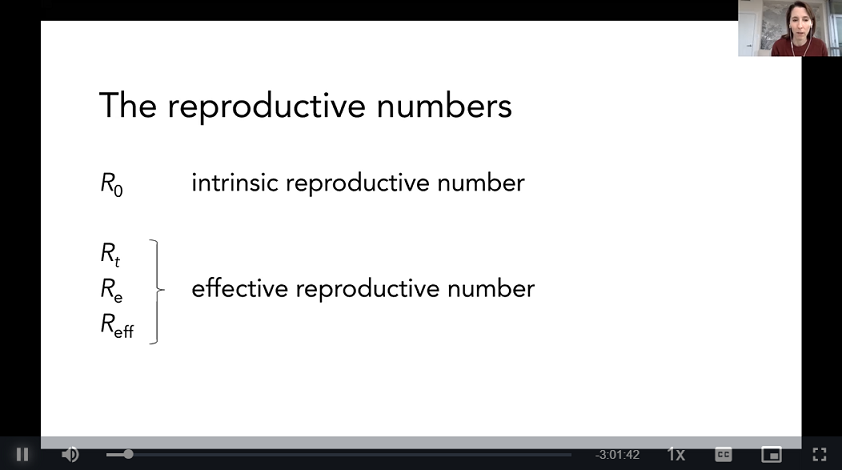Dealing with COVID-19 in Theory and Practice: Session I: Public Health
Presenters
October 29, 2020
Abstract
--Sarah E. Cobey (University of Chicago)
Reconstructing a pandemic from very messy observations
(Starts at 00:07:00)
--Nigel Goldenfeld (UIUC) and Sergei Maslov (UIUC)
Models of COVID-19 spread and mitigation on a university campus and beyond
(Starts at 01:10:00)
Abstract: We present modeling of the COVID-19 epidemic in Illinois, USA, capturing the implementation of a Stay-at-Home order and scenarios for its eventual release. We use a non-Markovian age-of-infection model that is capable of handling long and variable time delays without changing its model topology. Bayesian estimation of model parameters is carried out using Markov Chain Monte Carlo (MCMC) methods. This framework allows us to treat all available input information, including both the previously published parameters of the epidemic and available local data, in a uniform manner. To accurately model deaths as well as demand on the healthcare system, we calibrate our predictions to total and in-hospital deaths as well as hospital and ICU bed occupancy by COVID-19 patients. We apply this model not only to the state as a whole but also its sub-regions in order to account for the wide disparities in population size and density.
We discuss the role of heterogeneity on the evolution of COVID-19, highlighting the difference between short-term overdispersion and long term persistent heterogeneity. Like other models of heterogeneity, we show that the herd immunity threshold is suppressed, but unlike other models, we show that the resulting saturation is fragile or transient, and can change over time due to varying levels of individual social activity.
Lastly, we present an overview of efforts to reopen our university by using high-throughput surveillance testing of the student and staff population.
--Rupam Bhattacharyya, Bhramar Mukherjee, and Maxwell Salvatore (University of Michigan) and Debashree Ray (Johns Hopkins)
Predictions, role of interventions and implications of a national lockdown on the COVID-19 outbreak in India
Harvard Data Science Review Paper: https://hdsr.mitpress.mit.edu/pub/r1qq01kw/release/5
COV-IND-19 Study Group: https://umich-biostatistics.shinyapps.io/covid19/
(Starts at 02:15:50)
Abstract: India, the world’s largest democracy with 1.34 billion people, has undergone five phases of lockdown from March 25-June 30. The virus curve appears to have turned the corner only recently. In this group presentation we will discuss an extended SIR model for predicting case-counts in India. We will evaluate the national lockdown as a non-pharmaceutical intervention through various public health relevant metrics, and illustrate that regional variation makes the concept of a national peak nebulous. We will briefly touch upon seroprevalence surveys and what they tell us, and describe recent methodological innovations regarding incorporating selective and imperfect viral testing in an extended SEIR model for COVID-19. Final, we end by talking about going from numerical analysis to strategic visioning.
